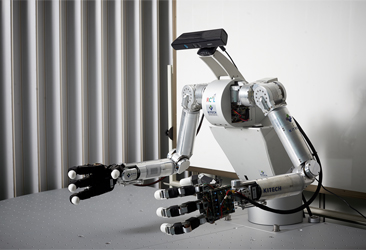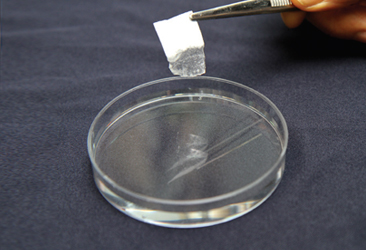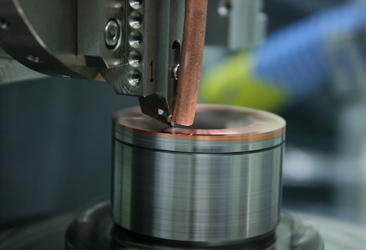R&D in Three Key Areas
In fulfilling its commitment to enhancing the technological competitiveness of SMEs and contributing to the growth of Korea's manufacturing industries, KITECH focuses on three key research areas: Intelligent manufacturing & materials technology, Human-centric manufacturing technology, and Sustainable development technology. KITECH strives to strengthen the fundamentals of Korean industries by carrying out demand-oriented R&D and application activities and securing original technologies for the future.
Intelligent manufacturing & materials technology
Human-centric manufacturing technology
Sustainable development technology
Human-centric manufacturing technology
Human-centric manufacturing technology discovers future growth engines and creates new markets by facilitating convergence between technologies considering human needs, preferences, and better lives in the manufacturing process and product service development stages. KITECH's research groups focus on Human-Centric Robotics, Autonomous Manufacturing & Process, User Convenience technology, Safety Convergence technology, and Textile Innovation technology are trailblazing a path toward a new future.
Major research achievements
Manipulation and assembly technology using an upper body humanoid robot
Highlights
Developed a design and manufacturing technology for an upper body humanoid robot built to represent the hands and arms of a human
Developed a technology that recognizes environmental information and secures stability so as to foster cooperation with humans
Developed a technology that enables the intelligent manipulation and assembly of objects using both the hands and arms of a robot
KITECH's upper body robot displays 50 degrees of freedom (DOFs) in contrast to only 38 DOFs by existing humanoid robots (based on whole body)
Benefits
Development of the world's first precision manipulation and assembly technology (0.05 mm) using robots is expected to help companies secure technological competitiveness
Robots developed with this technology can stand in for workers to handle dangerous and strenuous tasks at manufacturing sites
The said technology was transferred to SimLab, and more than 30 units have been sold to R&D centers and universities around the world


Biomedical fiber for wound healing and tissue regeneration
Highlights
Developed wound-healing functional materials using carboxymethyl cellulose derivatives (CMC)
Developed temporary skin substitutes using electrospinning technology
Developed a bio tissue regeneration system using biodegradable 3D fiber structures
Benefits
This fiber manufacturing platform technology is expected to boost productivity
Potential for the development of various types of formulations with outstanding wound-healing and tissue-regeneration functions to follow
Domestic production of high value-added medical products is expected to replace imports and create advanced medical markets
Transfer of core technology should help SMEs enhance technological competitiveness


Original technology in cutting and machining for ultra-precision optical lenses
Highlights
Developed an original technology for cutting and machining 700 mm or smaller micro patterns on ultra-precision optical lenses
Used in-house developed cutting and machining equipment that can control movements down to 1 mm to develop the micro pattern cutting and machining technology
Benefits
With this technology, companies can compete with global firms in the virtual and augmented reality markets, estimated at KRW 117 trillion in 2020
This world-class technology is anticipated to be applied to high value-added products, such as infrared cameras for self-driving cars, head up displays (HUD), and hyper-spectral lenses that can penetrate geographic features

